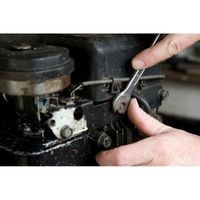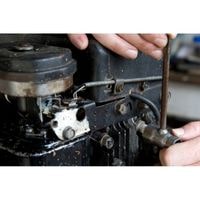Small Engines troubleshooting. You’re looking for small engine repair online and we’ve got you covered. We offer more than just the parts you’ll need to complete your small motor repair project.
We offer you comprehensive technical advice so you can take on the task at hand and fix it yourself. Furthermore, we offer our expertise on how to fix your snowblower as well as a lawnmower.
Whether it be a simple gear replacement or a total transformation of your machine at any point in time, rest assured that you will have the right information to get quality results when you look over the info available on our website.
Small Engines troubleshooting

When you’re shopping for lawnmower repair, don’t forget about the importance of an accurate diagnostics system.
Our troubleshooting guide takes your mower’s symptoms and leads you through a guided analysis that may help you reach a solution.
For example, if your lawnmower won’t start or it sputters when you do get it running, our troubleshooting guide can provide some common reasons why that might be happening and will help you resolve them on your own.
The small engine won’t start
Shine a light on the spark plug to determine if there’s anything wrong with it.
Spark plugs should be replaced if the porcelain insulator is broken, the electrode is damaged or burned away, or heavy carbon is accumulating near the electrode.
Use a spark plug tester to determine whether the spark plug is defective. The presence of a strong spark between the tester’s terminals when the engine is running indicates a defective spark plug. Replace it.
The small engine is hard to start
Engines are critical to automobiles and they run using fuel. An engine won’t run properly if there’s too much or too little fuel.
A clogged carburetor will mean that the vehicle doesn’t have enough fuel whereas a dirty air filter will reduce airflow which leads to getting too much fuel.
Engines rely on sparks for ignition to ignite the gas vapors in the cylinders and these sparks get delivered by spark plugs. In this case, it is necessary to replace it if the original is defective.
Shortly after starting, the engine stops
As fuel is used by the engine, its level in the fuel tank lowers. In order to compensate for this, the fuel cap allows air to enter the tank so that it can be returned to a state of equilibrium (however slightly).
If the fuel cap has a restricted vent through which this air enters, however, then an unbearably low-pressure state will be created when no more air can enter and a vacuum or “vapor lock” will occur.
To determine if your cap has a restricted vent you should try slightly loosening it using your hands before attempting to start up your engine.
If loosening it allows your engine to stay running you have likely found a problem with your cap and it will need to be replaced as soon as possible for safety reasons.
A small engine’s battery keeps draining
The engine’s alternator sends the proper voltage to the battery to keep it charged. If the alternator is defective,
it will not be able to charge the battery properly, causing an undercharged battery like that of a vehicle with a dead battery.
To test whether or not the alternator is defective, use a multimeter to measure the output.
Poor performance of the small engine
The engine may be too hot. Most often, when an engine runs poorly, it’s because it hasn’t received enough fuel.
This lack of fuel may be because of a clogged carburetor, a faulty fuel pump, or an obstruction in the line that delivers gas to the carburetor.
A clogged carburetor is due to leaving fuel in the engine for long periods of time on leave some ingredients evaporate leaving behind a thicker substance which can lead to blockage if it isn’t properly cleaned from time to time.
Revitalize your machine with Carb Cleaner and then if necessary either replace parts or have them professionally rebuilt.
The small engine leaks gas
We are having problems with the carburetor bowl gasket. Replace the carburetor bowl gasket if the leak originates from the bottom of the carburetor.
The carburetor bowl gasket might be dry or missing and is causing leaks. If you suspect that this is contributing to leaks, consider replacing it.
Related Guides
